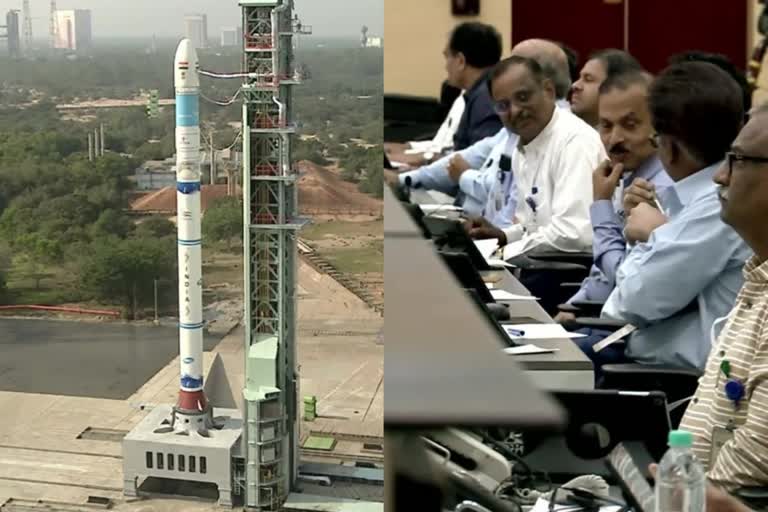Sriharikota (Andhra Pradesh): ISRO's second Small Satellite Launch Vehicle (SSLV D2) lifted off from the Sriharikota spaceport at 9.18 am on Friday, carrying EOS-07 satellite and two co-passenger payloads. The Indian Space Research Organisation (ISRO) launched the 34-meter tall SSLV rocket carrying three satellites - Earth Observation Satellite (EOS-07) of ISRO, Janus-1 belonging to Antaris of the US and AzaddisSat-2 belonging to Space Kidz India, Chennai - lifted off at 9.18 AM from the first launch pad at Sriharikota rocket port, Andhra Pradesh.
The ISRO has developed SSLV with a carrying capacity of 550 kg to the Low Earth Orbit (LEO) based on the market trend of going in for smaller satellites. The SSLV-D2 carried a total weight of 175.2 kg - 156.3 kg of EOS-07, 10.2 kg of Janus-1 and 8.7 kg of AzaadiSAT-2 - as its luggage. The SSLV rocket provides low-cost access to space, offers low turn-around time and flexibility in accommodating multiple satellites, and demands minimal launch infrastructure.
It is configured with three solid propulsion stages and a velocity terminal module. Costing about Rs 56 crore, the SSLV rocket stands 34 metre tall, two metre diameter vehicle having a lift-off mass of 120 ton, ISRO said. As to the mission's objectives, it is to demonstrate the designed payload capability of SSLV in LEO and injection of three satellites -- EOS-07, Janus-1 and AzaadiSAT-2 -- into the 450 km circular orbit.
As to the Friday's mission profile, about 13 minutes into its flight, the SSLV rocket will eject EOS-07 and soon after that the other two satellites Janus-1 and AzaadiSAT-2 would be ejected- all at an altitude of 450 km, said ISRO. The SSLV's maiden flight - SSLV-D1- on 7.8.2022 was a failure as the rocket had put the two satellites -- EOS-01 and AZAADISAT -- in a wrong orbit resulting in their loss.
This was ISRO's maiden mission this year, which had a six and a half hour countdown. The first flight of SSLV on August 7, 2022 was a partial failure due to an deviation in the flight path. Small launch vehicles provide low-cost access to space, accommodate multiple satellites and require minimal launch infrastructure.



